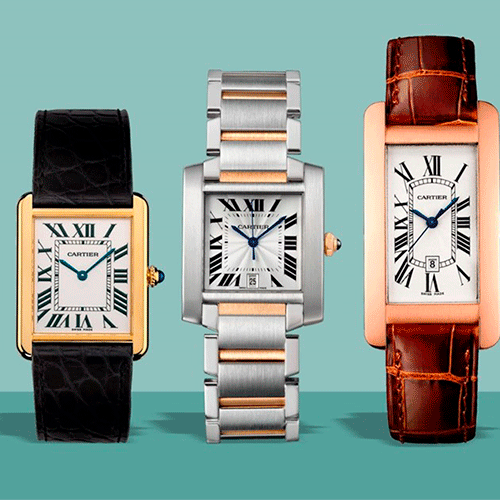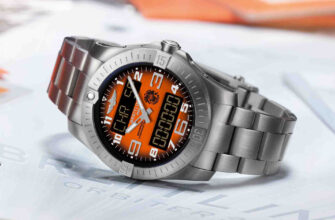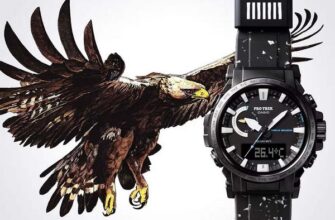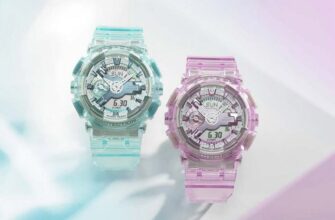It is difficult to imagine a wristwatch without the most important element - a bracelet, thanks to which the watch, in fact, is held on the wrist. Its choice must be approached no less carefully than the study of the material of the case or the functions of the mechanism.
The choice mainly comes down to an alternative: a leather strap or a metal bracelet (steel, gold or titanium, depending on the case material). Supporters of this or that decision adhere to approximately the same arguments as in the dispute, which side is better to break the egg. That is, the choice depends primarily on personal preference.

The arguments of connoisseurs of leather straps boil down to the fact that the bracelets are heavy, look massive, it is more difficult to fit them to the volume of the wrist, and in combination with the costume classics, the metal looks deliberately bright. Everything is correct. For ultra-thin watches, the traditional crocodile strap is definitely more suitable. And for classic everyday models for a business suit - crocodile or calf.

But - they object in the opposite camp - the bracelet is much more reliable and practical for everyday wear, it does not fray at the place where the buckle fits, ugly "creases" do not form on it and it will serve almost forever. Again, this is true. Even the most reliable crocodile or calf leather loses its elegant look over time, and the only option is to replace the strap, while the bracelet can most often be simply cleaned and polished. In addition, water procedures and especially sea salt are categorically contraindicated for leather products.
So the conclusion is obvious. For a classic ultra-thin watch of a strict business style or for an evening out, the best option is a prestigious alligator leather strap. Everyday models, especially for an active lifestyle and sports, feel more comfortable on the bracelet.

There are variations, of course. For example, there are alternatives for those who strongly dislike metal. Lightweight, hypoallergenic rubber is becoming increasingly popular in diving watches, while a textile NATO strap is available for casual sports watches. It appeared in special models for the British Air Force in the middle of the last century and has since almost supplanted leather from pilot's watches. Its convenience also lies in the fact that such a strap is easy to replace on your own.
Unlike the classic two-piece watch bracelet that attaches to the lugs, the NATO strap is simply a long textile strip that goes through the lugs on the side of the case back. By the way, it was this ease of handling that made such straps popular today: many collectors independently “dressed up” their prestigious models in bright colored textiles.

On the question of independence
There is another dubious argument that lovers of leather straps cite: they say, if anything, you can independently punch an additional hole in them with an awl, and adjusting the length of the bracelet will certainly have to be done in the workshop. In general, if you yourself pierced something in your crocodile, you can immediately throw it away. The same applies to attempts to independently change the strap by picking up the pins with a knife or screwdriver. The most obvious result of such experiments is a pierced finger or a broken pin.
Better go to any service, where the wizard has special tools.
Apparently, knowing this craving of people for self-repair, recently more and more Swiss brands have begun to produce watches with a quick-change strap system and even removable bracelet links.

What about the clasp
When choosing a bracelet or a strap, the most important point is to check the quality and reliability of the clasp, because this is the "thinnest place" of the watch, it accounts for the lion's share of all the owner's manipulations (more only on the crown). The bracelet lock should be adjustable in length, easy to open, but at the same time have an additional lock that protects the fastener from accidental opening, for example, from being hit or caught on clothing. It is better if the clasp on the bracelet is folded not twice on one side, but three times on both sides (in the descriptions of watches such a clasp is called "triple") - this is more reliable and allows you to quickly remove the watch from your hand, regardless of the width of the palm.
All the same requirements are also true for leather or rubber straps with a bracelet clasp (in some descriptions it is also called a "butterfly clasp" or "folding clasp"), only a classic leather belt loop at the end of the belt also plays the role of an additional fixator.
Black Tie watch straps, NATO straps, long straps for diving, pilot's and other professional watches, which are worn over a special suit, are supplied with only traditional buckles.

Strap guide
If you are a fan of classic wristwatches on leather, then the plus is that there is a huge variety of choices here. In addition to the common crocodile, calf and lizard, straps are now sewn from anything (more precisely, from anyone), from an ostrich to a rat and salmon. Plus, the leather can be dyed the most fantastic color.
You can also choose a style. In addition to the traditional, there are types.
- Rally. Such straps appeared in the 1960s, they were distinguished by large or small perforations in the skin, borrowed from automobile gloves.
- Bund. A German version of the 1950s pilot's belt with an additional leather badge threaded into the strap under the case.
- Zulu. It is similar to the classic NATO strap but made from calfskin.
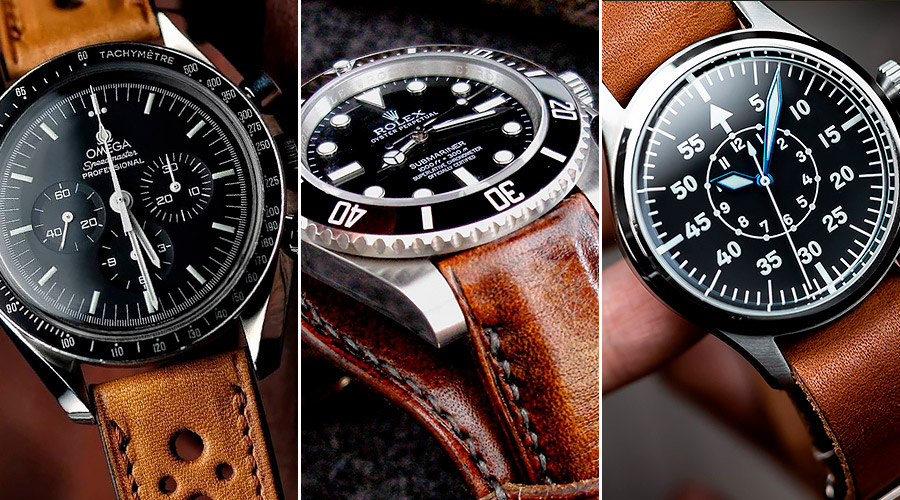
Bracelet Guide
Metal bracelets differ not so much externally as structurally. It is a huge thought work to make sure that the links fit comfortably around the hand, do not cling to hairs, do not collect dirt and do not ruffle the cuffs of the shirt.
Most of the popular bracelet shapes have come from Rolex, such as the three-row Oyster, the five-row Jubile, or the three-row President with raised faceted links. There is also a rather popular design "rice grains", when the wide plates of the bracelet are connected to each other by small polished rings. And, finally, a kind of hybrid of a strap and a bracelet is the “Milanese weave” or mesh - when the whole bracelet is a flexible, light chain mail made of tightly woven rings.
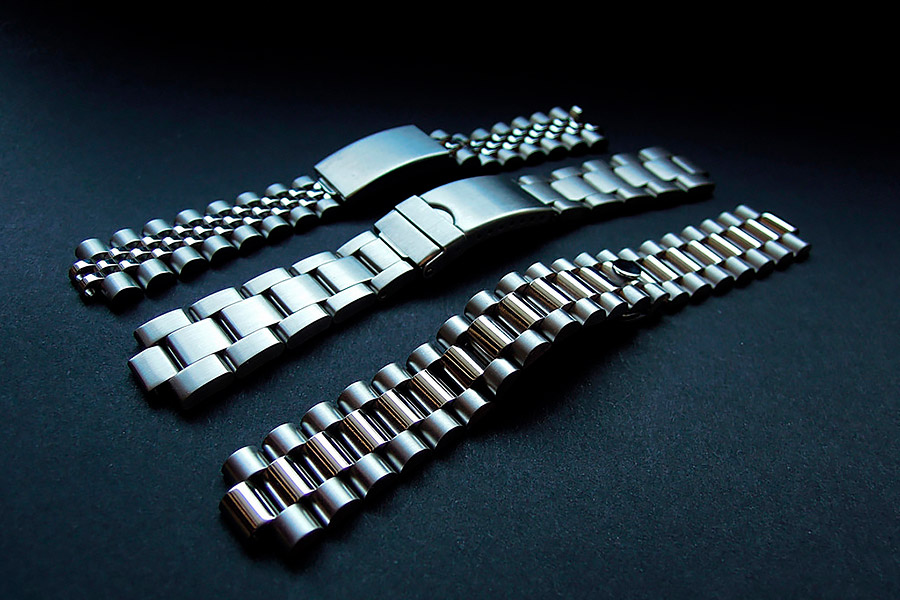
Choosing a bracelet or strap can drastically change the face of a familiar watch. But it is important to remember that this is a choice that can be changed at any time.
